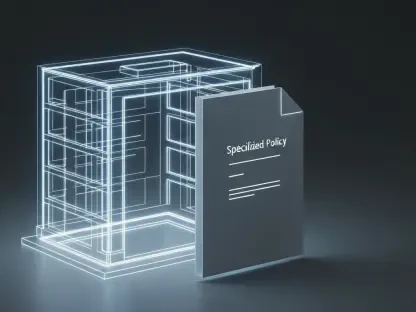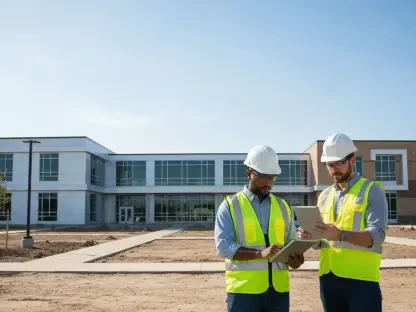I’m thrilled to sit down with Luca Calaraili, a renowned expert in construction, design, and architecture, who has a deep passion for integrating cutting-edge technology into the industry. With his extensive background, Luca offers unique insights into how innovations like artificial intelligence are revolutionizing processes such as permitting in municipal governance. Today, we’ll explore how AI is streamlining urban development, addressing longstanding challenges, and shaping the future of city planning, with a particular focus on pioneering efforts like those in Lancaster, California. Our conversation will dive into the mechanics of AI-driven permitting, the benefits it brings to communities, and how it adapts to complex regulatory environments.
Can you share your perspective on how AI is starting to transform permitting processes in cities like Lancaster, California?
Absolutely, Marie. AI is a game-changer for permitting processes, especially in forward-thinking cities like Lancaster. Traditionally, permitting has been a slow, manual process bogged down by paperwork and repetitive checks. AI steps in by automating tasks like pre-screening applications, validating them against local codes, and even guiding applicants through the steps. In Lancaster’s case, their partnership with an AI platform is designed to cut through bottlenecks and speed up approvals, which is critical for keeping development projects on track. It’s not just about efficiency; it’s about making the system more accessible and less frustrating for everyone involved.
What kinds of challenges in traditional permitting systems do you think AI is best positioned to solve?
The biggest challenges in traditional permitting are delays and errors. Applications often get held up due to missing information or minor mistakes, and overworked staff can’t always catch these issues quickly. AI excels at flagging discrepancies early—think of it as a digital assistant that spots a missing document or an incorrect form field before it becomes a problem. It also reduces the burden on city employees by handling repetitive tasks, freeing them up to focus on more complex decisions. For communities, this means faster project timelines, whether it’s a new home build or a commercial development, which can have a real economic impact.
How do you see AI platforms adapting to the specific needs of a city’s regulatory environment, especially in a place like California with strict rules?
California’s regulatory landscape, with laws like the California Environmental Quality Act, is indeed tough to navigate. AI platforms need to be highly customizable to handle that complexity. From what I’ve seen, successful implementations involve close collaboration between tech providers and city officials to map out local requirements and build those into the system. For instance, an AI tool might be programmed to check for environmental compliance factors specific to California or even flag exemptions under recent legislative changes. The key is that the technology isn’t a one-size-fits-all solution; it’s tailored to understand the nuances of local policies and development goals.
In terms of benefits, what do you think cities can realistically expect from adopting AI for permitting?
The most immediate benefit is speed. Approvals that used to take weeks or months can potentially be reduced to days, depending on the complexity of the project. Beyond that, there’s improved accuracy—AI reduces human error in form processing and compliance checks. There’s also a cost-saving angle; automating routine tasks means cities might not need to hire as many additional staff to handle growing workloads. For developers and residents, it’s about predictability and transparency—knowing where your application stands and what’s needed next. These benefits collectively boost trust in local governance and encourage more development activity.
How do you think smaller cities like Lancaster compare to larger ones like Los Angeles in adopting AI for permitting?
Smaller cities like Lancaster often have an advantage in agility. They can pilot new technologies faster because their systems are less sprawling and they face fewer bureaucratic layers compared to a metropolis like Los Angeles. That said, larger cities might have more resources to invest in comprehensive AI solutions and integrate them across multiple departments. What’s exciting about Lancaster is that they’re setting a precedent as an early adopter, which could inspire other mid-sized cities to follow suit. Their approach seems focused on tailoring the tech to their specific pace of development, which might differ from the broader, more standardized rollouts you’d see in bigger urban centers.
What role do you believe public-private partnerships play in bringing AI solutions to municipal processes like permitting?
Public-private partnerships are crucial for integrating AI into municipal processes. Cities often lack the in-house expertise or budget to develop these technologies from scratch, so collaborating with private companies brings in specialized knowledge and innovation. These partnerships also allow for co-design, ensuring the technology addresses real-world needs rather than being a generic tool. The flip side is that cities must ensure accountability and transparency in how data is handled and decisions are made by AI. When done right, as appears to be the case in Lancaster, these collaborations can accelerate modernization while aligning with community priorities.
Looking ahead, what is your forecast for the role of AI in urban planning and permitting over the next decade?
I’m very optimistic about AI’s role in urban planning and permitting over the next ten years. I foresee AI becoming a standard tool in most cities, not just for permitting but for broader planning tasks like zoning analysis, traffic modeling, and even predicting infrastructure needs. As the technology matures, we’ll see more sophisticated systems that can integrate data from multiple sources—think IoT sensors, public feedback, and historical trends—to make smarter, more holistic decisions. The challenge will be ensuring equitable access to these tools so smaller or under-resourced municipalities aren’t left behind. Ultimately, AI has the potential to make cities more responsive and sustainable, but it’ll require careful governance to balance efficiency with fairness.









